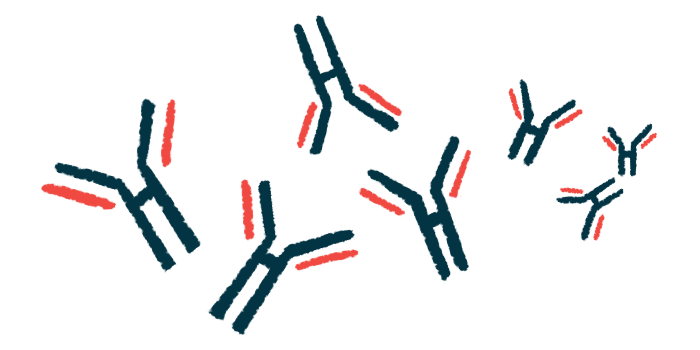Immune cells accumulation in lungs may be key driver of IPF: Study
Findings could lead to new strategies to combat pulmonary fibrosis

The abnormal accumulation of immune plasma cells in the lungs — and their subsequent generation of damaging antibodies — may be a key driver of idiopathic pulmonary fibrosis (IPF), according to new research by scientists from Rutgers Health.
The researchers found that antibody-producing plasma cells first accumulated in the lung tissue of IPF patients. There, they seemed to be recruited by subsets of mural cells, which surround and support blood vessels, and fibroblasts, a type of connective tissue cell involved in fibrosis, or the formation of scar tissue.
“These findings have potential implications for strategies aimed at targeting immune and antibody responses to combat IPF,” the researchers wrote.
The study, “Distinct mural cells and fibroblasts promote pathogenic plasma cell accumulation in idiopathic pulmonary fibrosis,” was published in the European Respiratory Journal.
Investigating the lung tissue of people with, without IPF
IPF is characterized by lung tissue fibrosis due to an unknown cause. This compromises oxygen intake, leading to symptoms that may include shortness of breath, cough, and fatigue.
Inflammation and immune activation are known features of IPF. Previous research has shown that IPF patients exhibit elevated antibody levels in the lungs — which could contribute to tissue damage. But how exactly these antibodies make their way to the lungs had not been clear.
In this study, the scientists examined lung tissues from people with or without the respiratory system disease, and discovered that IPF lung tissues had a wide distribution of plasma cells, a type of antibody-producing immune cell that’s normally found in the bone marrow. This was accompanied by clusters of antibodies near fibrotic regions.
“What we found most striking in this study is that all the fibrotic regions of IPF patients’ lungs are covered by antibody-producing plasma cells,” Qi Yang, MD, PhD, associate professor at the Rutgers Robert Wood Johnson Medical School and one of the study’s senior authors, said in a university news story.
Yang noted that there were “almost no plasma cells” in the lung tissues taken from people without IPF. “But in IPF patients, the lungs are full of them,” Yang said.
Through a series of additional experiments, the scientists identified that signals released from mural cells promoted plasma cell generation, while a certain group of fibroblasts released signals responsible for recruiting plasma cells to fibrotic areas of the lungs.
According to Reynold Panettieri, MD, director of the Rutgers Institute for Translational Medicine and Science and a senior study author, “this particular type of fibroblast has never been described before.”
While fibroblasts in general are known to be involved in fibrosis occurring in different organs, this particular group “seems unique to the lung,” Panettieri said.
Targeting immune cells processes in lungs may benefit patients
In a mouse model of lung injury, blocking the signals that seemed to be recruiting plasma cells reduced their accumulation in the lungs. It also lowered antibody levels and eased lung fibrosis.
The scientists believe that antibodies made by plasma cells may stimulate the production of fibrosis-promoting signaling molecules from other immune cells. Ultimately, targeting this process could thus be of therapeutic benefit for IPF patients, according to the team.
“If the plasma cells are really making the bad antibodies, I assume we may have to get rid of them,” Yang said. “Otherwise, patients will keep making these antibodies that drive the disease.”
A way of doing this is to target the subset of fibroblasts that are recruiting the plasma cells in the first place.
If the plasma cells are really making the bad antibodies, I assume we may have to get rid of them. … Otherwise, patients will keep making these antibodies that drive the disease.
These findings, Panettieri said, may provide a strategy.
“Now that we have a target, … we’re optimistic that we could affect that cell and not other fibroblasts that are important in normal injury repair response,” Panettieri said.
Medications targeting plasma cells already exist, the scientists noted — including ones used to treat multiple myeloma, a cancer arising from plasma cells. Such medications could possibly be repurposed for IPF, per the team.
In future studies, the researchers intend to investigate how fibroblasts and mural cells become abnormal in IPF. They’ll also look at whether the antibodies produced by plasma cells are self-reactive, meaning they’re targeting the body’s own healthy tissues, which would imply a possible autoimmune component to IPF.









